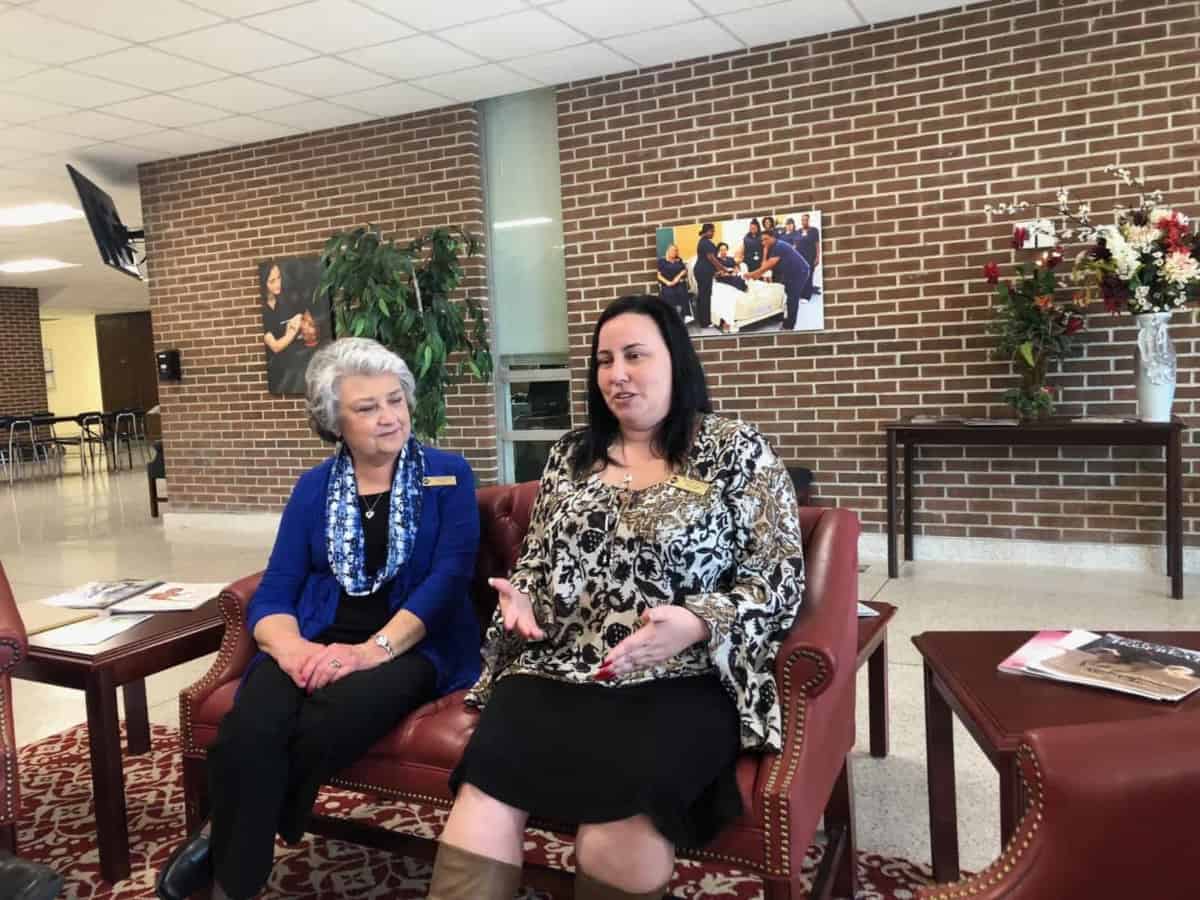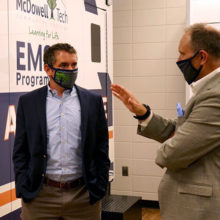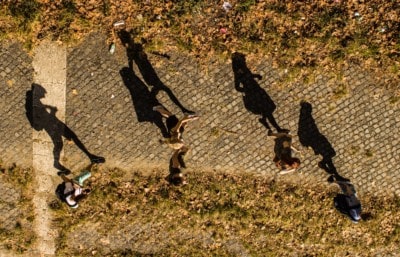American mass media have long portrayed a particular ideal of students entering college. They’re fresh-faced teens, just moving out of their parents’ home, and eager for the world to open up on a scenic campus where they will meet new friends, attend sporting events, go to poetry readings, and perhaps even protest.
The ideal is reflected everywhere — in philanthropic resources that invest heavily in four-year institutions, in our financial aid infrastructure, even in residency determination systems that often presume that students are coming from a parental home.
And the ideal is a full-time student, with minimal responsibilities aside from working a minimum-wage job for beer money.
But that’s not reality.
Hundreds of thousands of students are attending two-year institutions for customized training, workforce credentials, or other purposes related directly to employment. In 2015 alone, 894,763 students were awarded occupational education credentials.
These students skew older and often have families and the responsibilities children bring. Many face daunting challenges, such as food, housing, and financial insecurity, that create a very different educational experience than the idealized image of tossing a Frisbee on a sun-drenched college green.
“Students entering our community colleges differ greatly. … They are first-generation students, mature students returning to college, or entering college for the first time, single parents, working full time in addition to attending college, and often question whether they are ‘college material,’” Susan Barbitta, executive director of student success for the North Carolina Community College system, said in an email interview.
Nearly 70% of community college students in 2016 were working while enrolled as students, with 60% of those students working more than 16 hours per week. The same study showed that the majority of those working students were working to meet a financial need. Or, to put it plainly, they are working because they have to, not because they need some spending money on the weekends.
That creates another hurdle.
“Working too many hours — above the 15-hour threshold per week — can also lead to a higher probability of non-completion and dropping out for low-income students,” said a 2018 report from the Georgetown Center on Education and the Workforce. “If we add that to student loan debt incurred from trying and failing to complete a credential, some of these students were possibly worse off for having tried. The net result is that students who most need the income and high quality work experiences often wind up with the least access to both.”
In short, many community college students have an extra hill to climb on the path to attainment. Over the past 18 months of traveling to community college campuses, I’ve met many students who are living this reality, and not an awful lot who are living the idealized version of college life.
Meet Amanda Vick
When you drive down Kehukee Park Road in Williamston, your first sight of Martin Community College might be a cluster of horses grazing next to a newly painted fence. If you don’t know that Martin is known for its equine program, you might believe you are passing a farm before you see the digital sign announcing your arrival on the campus while promising to its community that it is “Building Better Futures.”
Martin Community College takes its name from the county it serves. One of the 58 two-year institutions that make up the North Carolina Community College system, the college was granted community college status by the General Assembly in 1976.
On my first visit to Martin, the equine program promised to be a key part of the story. After all, how many two-year institutions have colts, mares, and steeds running around?
The interim president of the college, however, wanted to make sure we had time to meet their then-student body president, Amanda Vick. Vick had taken two decades off from her education after dropping out in her teens.
Vick admitted that she had struggled in the intervening decades, but she had been fortunate to have three children she was raising on the outskirts of Williamston. Those daughters became her inspiration to go back to school, and it was Martin that served as her pathway to an education.
Vick was fortunate to have her mother and oldest child step up to take care of the family. Other students are not so lucky. In North Carolina, the Belk Center notes, many community colleges that had child care centers are closing them for varied reasons, including cost and liability.
The most effective step many colleges are taking in lieu of child care centers is scheduling classes at times that are better for working parents.
Hunger and housing challenges
In a 2018 #RealCollege survey by Hope4College, which included 86,000 participants across 123 two- and four-year colleges, 47% of the students from two-year institutions reported “very low” or “low” food security.
In the same survey, 60% of respondents at two-year institutions said they experienced housing insecurity.
This is the reality for far more college students, whether they are attending a two-year institution or a four-year college, than popular culture suggests. Researcher and author Sara Goldrick-Rab of Temple University’s Hope Center told us in an email interview: “The reality is that today’s students, even the youngest among them, are hardly carefree kids. They are the austerity generation of college students, attending college with far less support (from family, from financial aid, from states, etc.) than in the past. The new economics of college are responsible for this.”
The cost of college isn’t just due to rising tuition, but also other soaring expenses, including rent, Goldrick-Rab noted. She also pointed to income instability among student families, flat wage growth, and state budget cuts beginning during the Great Recession in 2008-2009 as factors. She said the challenges are compounded because “the safety net is shredded, so programs like TANF and SNAP aren’t good backups when financial aid falls short. And public colleges and universities are deeply underfunded on a per-student basis thanks to state budget cuts.”
Asked whether the numbers around housing and food insecurity from her survey surprised her, Goldrick-Rab replied, “When I first saw them in 2015, yes. In 2019 after years and years of this, no. Now that I’ve seen the new economics of college play out on the ground on colleges all over the country, I believe we get exactly what we pay for.”
These challenges exist against a backdrop of less philanthropic investment in two-year institutions compared with four-year colleges.
Harvard University’s endowment alone is north of $40 billion. The largest community college endowment falls around $500 million and belongs to Miami Dade College — a total that makes their endowment the 196th largest in the country, according to the Chronicle for Higher Education.
According to a piece from Hechinger Report, as of 2013, “investments from community colleges’ endowments, combined, earn $27.6 million a year. … That’s how much Harvard alone makes from its $32.7 billion endowment about every two and a half days.”
Goldrick-Rab minced no words when asked about the philanthropic disparity.
“Donors who give them money are contributing to hoarding,” she said, “and while they might fantasize that they are changing the lives of a few low-income students, they are missing out on the chance to affect thousands at a time — by investing in the institutions that are open and provide broad access, and where resources are thin – philanthropy can make a massive difference.”
In other words, these institutions are missing the opportunity to help more students like Amanda Vick.
Today, Amanda is working at the Humane Society of Greenville, homeschooling her children, and plotting her next educational opportunity. She intends to enroll at East Carolina University in hopes of becoming a federal auditor. Her oldest daughter is now attending Martin Community College and aspires to launch her own business.
This is the fourth piece in a series on challenges facing community college students titled: An Extra Hill to Climb. The series is a partnership between EdNC.org and Spotlight on Poverty and Opportunity. Spotlight is a non-partisan initiative that gathers diverse perspectives to tell compelling stories illustrating the economic hardship confronting millions of Americans and to lift up genuine solutions. EdNC.org and Spotlight partnered to illustrate the challenges facing many community college students through stories from North Carolina and data illustrating the broader challenges in the United States.




